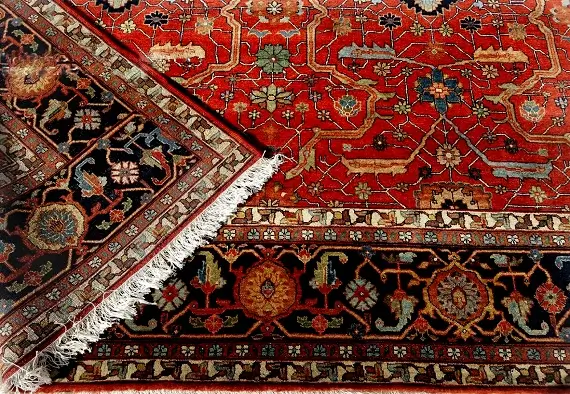Understanding How Fabric Recycling Machines Work: A Comprehensive Guide
Fabric recycling machines play a crucial role in the sustainability and circular economy of the textile industry. These machines are designed to efficiently separate, clean, and process discarded fabrics so that they can be turned into new materials. In this comprehensive guide, we will delve into the inner workings of fabric recycling machines to better understand how they operate and contribute to reducing waste in the industry.
The Mechanical Shredding Process
At the heart of fabric recycling machines is the process of mechanical shredding. This involves breaking down fabrics into smaller pieces, which can then be further processed into new yarns or fibers. The first step in this process is the feeding of the discarded fabrics into the machine's shredder. The fabric is then cut and shredded into smaller pieces using sharp blades or rollers. This step is critical in preparing the fabric for further processing and ensures that it is uniform in size.
Cleaning and Sorting
Following the shredding process, the fabric pieces undergo a cleaning and sorting stage. This involves removing any contaminants such as buttons, zippers, or dirt that may be present in the fabric. Specialized equipment such as magnets and air separators are used to separate the fabric pieces from unwanted materials. Once the fabric is cleaned and sorted, it is then ready for the next stage of processing.
Fiber Separation
The next step in fabric recycling machines is the fiber separation process. During this stage, the shredded fabric is mechanically separated into individual fibers. This is achieved through a series of processes such as cutting, tearing, and carding. Carding, in particular, involves combing and aligning the fibers to create a uniform and consistent fiber structure. This is essential for ensuring the quality of the recycled fibers and yarns produced by the machine.
Spinning and Refining
Once the fibers are separated and processed, they can be further refined and spun into new yarns or fabrics. This is done through spinning machines that twist and align the fibers into yarns of varying thickness and strength. Depending on the desired end product, the recycled yarns can be blended with other materials or dyed to create unique colors and textures. This flexibility in processing allows fabric recycling machines to produce a wide range of recycled textiles that can be used in various applications.
Multi-Material Recycling Capabilities
In addition to recycling fabrics, some machines are also capable of recycling other materials such as plastic bottles or polyester fibers. These machines utilize specialized processes such as melting and extrusion to break down and reprocess these materials into new fibers or fabrics. By incorporating multiple recycling capabilities, fabric recycling machines are able to maximize their efficiency and contribute to a more sustainable and eco-friendly manufacturing process.
The Future of Fabric Recycling
Overall, fabric recycling machines play a vital role in reducing waste and promoting sustainability in the textile industry. By understanding how these machines work and the processes involved in fabric recycling, we can better appreciate their importance in creating a more environmentally conscious approach to textile production. Through continued innovation and investment in recycling technology, fabric recycling machines will continue to revolutionize the industry and pave the way towards a more circular economy.
https://www.3recycling.com/Understanding How Fabric Recycling Machines Work: A Comprehensive Guide
Fabric recycling machines play a crucial role in the sustainability and circular economy of the textile industry. These machines are designed to efficiently separate, clean, and process discarded fabrics so that they can be turned into new materials. In this comprehensive guide, we will delve into the inner workings of fabric recycling machines to better understand how they operate and contribute to reducing waste in the industry.
The Mechanical Shredding Process
At the heart of fabric recycling machines is the process of mechanical shredding. This involves breaking down fabrics into smaller pieces, which can then be further processed into new yarns or fibers. The first step in this process is the feeding of the discarded fabrics into the machine's shredder. The fabric is then cut and shredded into smaller pieces using sharp blades or rollers. This step is critical in preparing the fabric for further processing and ensures that it is uniform in size.
Cleaning and Sorting
Following the shredding process, the fabric pieces undergo a cleaning and sorting stage. This involves removing any contaminants such as buttons, zippers, or dirt that may be present in the fabric. Specialized equipment such as magnets and air separators are used to separate the fabric pieces from unwanted materials. Once the fabric is cleaned and sorted, it is then ready for the next stage of processing.
Fiber Separation
The next step in fabric recycling machines is the fiber separation process. During this stage, the shredded fabric is mechanically separated into individual fibers. This is achieved through a series of processes such as cutting, tearing, and carding. Carding, in particular, involves combing and aligning the fibers to create a uniform and consistent fiber structure. This is essential for ensuring the quality of the recycled fibers and yarns produced by the machine.
Spinning and Refining
Once the fibers are separated and processed, they can be further refined and spun into new yarns or fabrics. This is done through spinning machines that twist and align the fibers into yarns of varying thickness and strength. Depending on the desired end product, the recycled yarns can be blended with other materials or dyed to create unique colors and textures. This flexibility in processing allows fabric recycling machines to produce a wide range of recycled textiles that can be used in various applications.
Multi-Material Recycling Capabilities
In addition to recycling fabrics, some machines are also capable of recycling other materials such as plastic bottles or polyester fibers. These machines utilize specialized processes such as melting and extrusion to break down and reprocess these materials into new fibers or fabrics. By incorporating multiple recycling capabilities, fabric recycling machines are able to maximize their efficiency and contribute to a more sustainable and eco-friendly manufacturing process.
The Future of Fabric Recycling
Overall, fabric recycling machines play a vital role in reducing waste and promoting sustainability in the textile industry. By understanding how these machines work and the processes involved in fabric recycling, we can better appreciate their importance in creating a more environmentally conscious approach to textile production. Through continued innovation and investment in recycling technology, fabric recycling machines will continue to revolutionize the industry and pave the way towards a more circular economy. https://www.3recycling.com/












